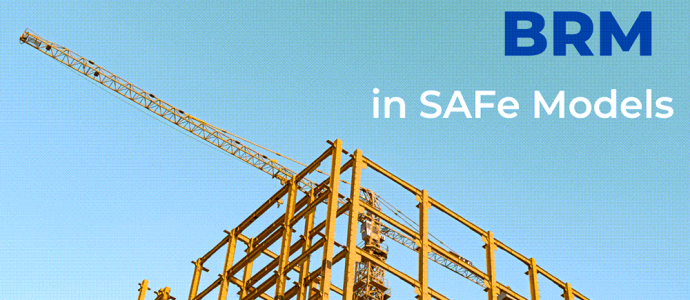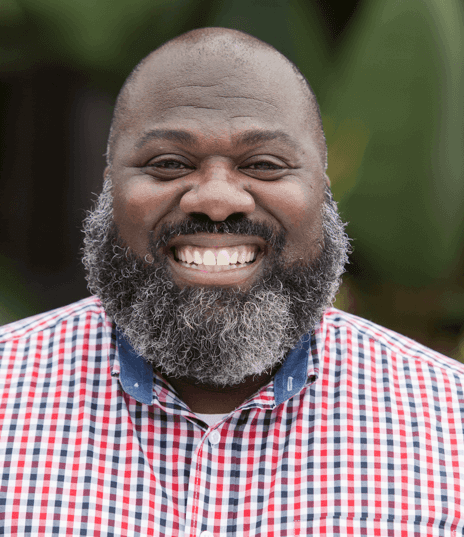BRMs in a SAFe World…That is, a Scaled Agile Framework Model

“My mission is to add value. My attitude is of active curiosity, and my method is through relationships of trust.” – Francois Baird
I came across this quote from Francois Baird in 2015 while doing research for an article I was writing on how to effectively define business value. It struck me profoundly in that it pointed out three key areas I was keenly focused on at that time in my career: defining business value, learning how to ask the right questions, and building powerful relationships. These three areas are avenues to innovation, growth, and business-value-delivery. I spent a little time reflecting on this quote, continued on to finish my article and ultimately forget about it!
Down the road, I was chatting with a colleague and something he said sparked my memory of this quote. It was like being struck by lightning a second time. It was five years later and I still found myself keenly focused on those three areas as I tried to help organizations understand the intersection of Business Relationship Management and Agile frameworks in effectively delivering value. The right balance of the three make it significantly easier to deliver value, especially if your organization has Business Relationship Managers (BRMs) and has implemented Scaled Agile Framework (SAFe).
Through an interesting set of circumstances and an email or two back and forth, I agreed to write an article on the most effective ways to integrate value plans in an organization utilizing the SAFe model. I think the best way to do that is to explain how I have integrated BRMs (or business relationship management capabilities) into SAFe.
Back in 2015…
I was at the tail end of my professional transition from developing world-class BRM teams and capabilities to leading enterprise-wide Lean Agile transformations. For many years up to that point I’d share with anyone who’d listen that Agile and BRM were compliments, not competitors. I’d just finished up my first Scaled Agile Framework (SAFe) transformation in an organization where I’d also further advanced the BRM capability. This allowed me to see the connection between the two and combine pieces from each to provide teams a way to effectively deliver large amounts of value quickly.
I had three BRMs in the organization all of whom leadership wasn’t sure what to do with; we were going SAFe and the SAFe Big Picture didn’t show BRMs on it, so it was unclear what to do with them. In fact, all of the responsibilities we’d defined for the BRM were split into a few different roles, and some of the key activities BRMs performed were accomplished by other practices. Through more luck than logic we decided to have two BRMs work with Product Managers and one would shift her role to be the Release Train Engineer.
We started working to get the teams and organization ready for the first PI Planning event (in those days it was called PSI Planning). I’d love to say, magically everything was great and we clearly figured out what to do. We did not. It was exciting, informational, fun, but chaotic as the first PI Planning events always are.
Afterwards, we took a survey of the 176 people that attended, and two areas scored the highest:
- The clarity of the Planning Objectives and,
- The Roadmaps of five of our nine teams on the Agile Release Train
When we debriefed to see why, of course the roadmaps where the Product Managers were partnered with BRMs were not only very well defined, but also included full value plans. The BRMs went farther to ensure value was actually realized and optimized with the business partners. This created clarity on the capabilities and value the teams were working to deliver, which cascaded into their delivery plans. We also found that the RTE had pushed hard to ensure the Planning Objectives were value-focused, and that the team delivery plans “laddered up” well.
Over the next few PI Planning events we got better at understanding and delivering value, and the BRMs became an integral part of helping Product Managers strategically think about the roadmaps and how they could be oriented in a way to help the teams deliver value faster.
As BRM and SAFe have both evolved over time, I have witnessed the connections between the SAFe Model and the BRM Philosophy become closer. Because of this, I have been able to replicate the accomplishments of BRMs in organizations leveraging SAFe myself, as well as through friends/colleagues.
I believe there are three things to consider if you find yourself as a BRM in an organization adopting SAFe:
- SAFe model and BRM philosophy are complimentary
- Value delivery and value realization are the most important metrics to measure
- Your organization is free to make the Agile recipe their own
SAFe Model and BRM Philosophy are Compliments
The Baird quote unlocked a connection for me that I knew implicitly, but was unable to clearly articulate; the SAFe model and the BRM philosophy are compliments, not competitors. The BRMs I have worked with have found they can provide real value in the following areas:
- Shaping demand – partnering with business and sharing ownership of both strategy (direction) AND sharing ownership of ensuring meaningful results (value)
- Preventing value leakage when the full potential value from solving a business problem or exploiting an opportunity is not realized in practice
- Partnering with business and technology leaders at the Lean Portfolio Management layer on defining and describing strategic demand
- Writing Portfolio and/or Lean Business Cases and accompanying with the full idea documents and value plan
- Helping to create Portfolio Visions and/or Value Streams and ensure results through these over time
- Articulating strategic themes
- Working to satisfy overall organization purpose through the collective SAFe efforts across the organization
BRMs are relationship-centered and have the tools, the skills, the capabilities to be effective on both the people and technology aspects of this work.
BRMs I have worked with have also taken on other roles like RTE, but leveraged BRM capabilities to bring additional depth. They have effectively develop PI Objectives (a summary of the business and technical goals that are targeted to achieve in the PI) in ways that are much richer and business-value focused. In organizations where the RTE is not a BRM or doesn’t understand how to effectively apply BRM capabilities, the PI Objectives look more like the technical roadmap that needs to be completed to achieve some project milestones. When the PI Objectives are value-focused and aligned to the accomplishment of an overall value plan ensures that the application of the SAFe model meets the spirit.
Now listen, I understand that some Agilists can be a bit militant, and some SAFe Agilists are no different. They believe if you’re not titled Product Owner, Scrum Master, or Team you have no role to play in Agile (for safe the role list is bigger, but you get my point). I respectfully disagree with that perspective. I firmly believe that Business Relationship Managers enhance value delivery in Agile frameworks and I’ll happily have a debate with any Agilist on this point. Not only do I believe this, I have proven it over the past nine years in organizations that have adopted SAFe and those that have used Scrum.
Value Shaping, Value Realization, and Value Optimization
Delivering value to the market continues to be the most important (and often most elusive) endeavor an organization undertakes. From the challenge of defining what value is, to the complexity of creating and delivering it as fast as possible, while ensuring ongoing value optimization before the desires of the market shifts – the issues are plenty. Many, many companies I have worked with put significant focus on defining what value is, declaring the value they hope to achieve, and documenting how they can deliver value quickly, but rarely do they determine how they will understand and/or measure if they achieved the desired value. This would be the same as spending months painstakingly researching where to open a restaurant, finding and renovating the perfect location, building a mouthwatering menu, hiring a world class staff, opening up and then simply never going back to see how the restaurant is doing. It sounds absurd when put this way, but this is what happens! This should never happen.
As a BRM, this analogy should both ring true and make you cringe. My advice to you is to make sure whatever Agile framework you find yourself in, value shouldn’t be released without having a way to measure if your organization actually gets the value. In SAFe models, it’s a little easier to ensure this happens as the model itself has inflection points that are supposed to enforce it, but many organizations ignore or twist these points. It should be clear what the value will be and when to expect the value to be returned. That should sound very familiar…kind of like a Value Plan. It is a Value Plan!
Your Organization is Free to Make the Agile Recipe their Own
Before you take this article to your organizational Agilist and shake it in their face as proof of what you have been saying, please keep reading. I am not saying you can change Agile frameworks wholesale, but it should also not be seen as an immutable recipe passed down by generations. Read this whole section first, then feel free to shake it in the face of whoever you’d like!
Many organizations elect to “go Agile” to address the challenge of delivering value to the market quickly. Often, there is a blind allegiance to the practices and behaviors without taking a step back and thinking about the goal and spirit of Agile. The first sentence in the Agile Manifesto is critical; We are uncovering better ways of developing software by doing it and helping others do it. It doesn’t say, “We’ve found a bunch of practices that you must follow in order to deliver software”. In fact, the entire Agile Manifesto contains four Values and 12 Principles. There aren’t any practices or roles mentioned at all. What is important is working together effectively to deliver value.
SAFe provides the most comprehensive approach to applying Agile at scale, but as I shared with you, I have found success in having BRMs be part of that model even though they aren’t on the original recipe.
Hopefully, you’ve had some fun, a few laughs, and also gotten some tips on how to be a BRM in a SAFe world err…..model. Good luck!

Aaron Monroe, VP Product Management
About the Author
Aaron Monroe is a Product Management executive and an Organization Culture & Design specialist. He’s a thought leader in both Business Relationship Management and Lean-Agile, having built a number of Business Relationship Management teams, led multiple enterprise-wide Agile transformations in small, mid-range, and Fortune 100 companies, and authored a number of articles and Body of Knowledge (BOK) chapters.
Aaron is a proven leader capable of defining and implementing Lean-Agile behaviors and practices that shape business value and ensure value realization. He has deep expertise and implementation experience in a number of Agile frameworks including, Lean, Scrum, Kanban, and SAFe.
Aaron holds B.A. and M.A. degrees in English, an M.S. degree in Project Management, and an MBA in Entrepreneurship and Innovation. He also holds Project Management Professional (PMP), Certified Scrum Professional (CSP), Certified Scrum Product Owner (CSPO), Certified Scrum Master (CSM) and SAFe Program Consultant (SPC 5.0) certifications
Professional Members of BRM Institute gain access to the Online Campus where other BRM professionals from around the world can share stories, challenges, strategies, and solutions with one another!
